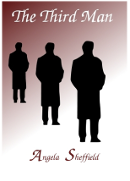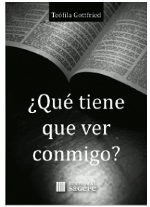Truth really can be stranger than fiction.
First Page - Now launched! All the stories are true, or based on real events. Unlimited reading for $4.99 / month. No downloads. Read on your phone, tablet or computer.
La verdad puede ser más extraña que la ficción.
First Page - ¡Ya está en marcha! Todas las historias son verídicas, o están basadas en hechos reales. Lectura ilimitada por $4.99 / mes. No hay que descargar nada. Lea en su teléfono, tableta u ordenador.
Manna Minutes Podcast: Eye-opening Bible study in less than five minutes! Access all episodes here.
Manna Minutes en español:
Estudio bíblico que nos hace abrir los ojos en menos de cinco minutos! Acceda a todos los episodios aquí.
Manna Minutes Podcast auf Deutsch:
Augenöffnendes Bibelstudium in weniger als fünf Minuten! Alle Episoden finden Sie hier.
Was There A Curse On Helen's Romantic Life?
The Third Man by Angela Sheffield is based on a true story. Read chapter one now!
View Content By Specific Category
¿Qué tiene que ver conmigo? por Teófila Gottfried
Lo que leemos en la Biblia tiene que ver con todos los seres humanos, sean cristianos o judíos, ateos o agnósticos, budistas, musulmanes o adherentes a alguna de las filosofías o nuevas religiones que surgen en el mundo. ¿Por qué? Ver mayor información sobre este interesante libro.
Scripture of The Day - St. John 14:6
Jesus saith unto him, I am the way, the truth, and the life: no man cometh unto the Father, but by me.
Escritura del día - San Juan 14,6
Jesús le dijo: Yo soy el camino, y la verdad, y la vida; nadie viene al Padre, sino por mí.
Bibelstelle des Tages - Johannes 14,6
Jesus spricht zu ihm: Ich bin der Weg und die Wahrheit und das Leben; niemand kommt zum Vater, denn durch mich!
Does The Bible Tell Us To Make Sacred Images? The Crafty Lie Unmasked

Let's easily expose the crafty lies some Catholics are telling to defend Catholicism's pagan practices concerning images. In fact, we will look at the same biblical passages they themselves cleverly use to deceive people.
First and foremost, these Catholics claim they do NOT worship images, because "worship means to recognize as a supreme and eternal God." Immediately we see an attempt to change the very definition of "worship" to separate themselves from blatant idolatry. According to any dictionary, as well as the Bible, "worship" is to pay reverence to any divine or supernatural being. The word "worship" has never been confined to mean the reverence of one supreme and / or eternal being. Polytheism--which dates back to the dawn of time--involves the worship of many gods, not just one supreme god. The Greeks worshiped many gods, not just their supreme god Zeus. The Egyptians worshiped many gods, not just their supreme god Amun-Ra And the list could go on.
With that understanding out of the way, the very first scripture at which we will look is crucial, and should always be kept in mind when looking at biblical scripture dealing with having, making and worshiping images. Exodus 20:4 says, "Thou shalt not make unto thee any graven image, or any likeness of any thing that is in heaven above, or that is in the earth beneath, or that is in the water under the earth."
Key words to keep in mind from the Exodus 20:4 scripture are "UNTO THEE". Two small words that make all the difference in the world. Catholics point out--in defense of their anti-biblical use of images--that God Himself commanded the making of images of cherubim in Exodus 25:18. But right in that 25th chapter of Exodus, verses 8 and 9 plainly tell us what is going on: God is giving instructions for the making of a sanctuary...a tabernacle for Him to dwell among His people. The images God commands to be made are for HIMSELF. They are unto Him, NOT unto thee. Remember the prohibition in chapter 20 of Exodus is, "Thou shalt not make UNTO THEE any graven image..." Moses is not making the tabernacle for himself, but rather for God. Therefore, he is not making the images of the cherubim in the tabernacle for his own pleasure, and of his own will. He is making them for the Lord, according to the Lord's very specific instructions. To make an image UNTO THEE, and to make one UNTO GOD are two entirely different things.
Catholics claim that because God spoke to Moses between the images of cherubim (Exodus 25:22) that it is okay for us to have and connect with God through images. We repeat. Moses did not make those images for himself, nor of his own will. He was following direct orders from the Lord who ordered the making of the tabernacle in order to dwell in the midst of Israel. It is not strange that the Holy Spirit would be "attached" to the images whose making He commanded.
Some Catholics even point out that Jesus--when He mentioned the brazen serpent--never condemned its making (St. John 3:14.) And why would He? He is God. And did not God command the making of the brazen serpent in Numbers 21:8? Yes, He did. Why would we expect Jesus to condemn what He ordered?
Conclusion: Do not be deceived by Catholics who teach it is okay to make, have and even bow to images, because there were images of two Cherubim on the Ark of the Covenant.
Yes. God spoke from between the cherubim. And Joshua fell on his face before the Ark with the cherubim. Again, Moses did not decide on his own to make those cherubim, nor was their appearance according to his imagination. Why then do Catholics make images according to their imagination, and call it biblical? Concerning the design of the tabernacle, we read that God said, "According to all that I SHEW thee, after the pattern of the tabernacle, and the pattern of all the instruments thereof, even so shall ye make it" (Exodus 25:9).
Scripture says God SHEW (showed) Moses what to do. What pattern of images have Catholics received from God? It should strike us as very strange that in all the images God commanded to be made for Himself, NOT ONE was the image of a person. Not of Abraham. Not of Noah. Not even of Moses to whom He gave instructions for the making of His tabernacle. Why then do Catholics have images of Mary with a "baby Jesus" and images of "saints" who also engaged in pagan practices? Search the Bible from Genesis to Revelation. You will not find any saint of God making images of people, not even of righteous people. Not even of Christ Himself. Now then, Christ is part of the Godhead. Yet, we are not to imagine what He looks like, make an image, and bow to it to somehow feel closer to Him. This is not opinion, but biblical truth. We read, "...We ought not to think that the Godhead is like unto gold, or silver, or stone, graven by art and man's device." (Acts 17:29). "Man's device" refers to his own thoughts and imagination.
The images used in Catholicism are ones that are of man's own device...his own imagination. Catholics claim their images serve to remind them of God. In the Old Testament, God dealt with people through prophets and the specific images He commanded. And because He commanded and designed them, His Spirit was "attached" to them. Jesus plainly teaches us that under the New Testament, the Holy Spirit is who reminds us of God's Word (St. John 14:26). Jesus Himself is the Word of God (St. John 1st chapter). So, the Holy Spirit reminds us of Him. Now then, the Holy Spirit lives in true New Testament believers (St. John 14:17). So, if the very Spirit of God is living in you, why do you desire an image to connect with God? Something is very wrong.
But Did Not Solomon Include Images in The Temple of God On His Own Accord?
In an attempt to deliver a final blow to the Protestant teaching that reverencing images is sin, Catholics turn to Solomon's construction of a temple for the Lord. They say the scripture of 1 Kings 7:29 says Solomon included images of lions, oxen and angels in the temple he built for God to inhabit. They also say this wise man did not receive instructions from God to include images of lions and oxen and angels, but that we know God accepted it, because His Spirit filled the temple. First of all, the images of lions and oxen were NOT included in the temple. Chapters six and seven of 1 Kings plainly tell us Solomon built TWO houses. One was for the Lord (the temple), and one was for himself...his palace. We read, "In the fourth year was the foundation of the house of the Lord laid in the month Zif. And in the eleventh year, in the month Bul, which is the eighth month, was the house finished throughout all the parts thereof, and according to all the fashion of it. So was he seven years in building it." (1 Kings 6:37-38).
Immediately after the above verse (the last verse of chapter six) comes 1 Kings 7:1 in which we read, "But Solomon was building his OWN house thirteen years..." So, we have seven years for the building of God's house, and thirteen years for the building of Solomon's own house (palace). It is NOT in the sixth chapter--which speaks of the temple for the Lord--that we read Solomon included images of lions and oxen, but rather in the seventh chapter, which describes the design of his OWN house...his own palace. These are two entirely different houses! The eigth chapter of 1 Kings plainly lets us know the glory of God filled the temple Solomon built for the Lord (1 Kings 8:1-13), NOT the palace Solomon built for himself.
As for the cherubim Solomon included in the actual temple he built for God, we cannot say he made the decision to include them. Do we forget that Solomon knew God had ordered the making of images of cherubim for His first tabernacle in the wilderness? God had already commanded the presence of those angels in His house. Why would Solomon take it upon himself to leave them out? They were NOT Solomon's own idea. He was following a God-given pattern clearly seen when we compare the tabernacle of Exodus to the temple / tabernacle of 1 Kings. Again, the addition of lions and oxen appear in Solomon's own palace, NOT in the temple Solomon built for God.
Satan wants us to be disobedient in the area of making, having and bowing to images. After all, days are coming when a satanic spirit will use an image to order the death of true followers of Christ.
"And he had power to give life unto the IMAGE of the beast, that the image of the beast should both speak, and cause that as many as would not worship the image of the beast should be killed." (Revelation 13:15).
So, I Cannot Have Any Images At All?
Does this mean we should never take photographs of people or animals? After all, is that not making images the modern way? Let's not complicate things, or go overboard. Exodus tells us not to make images UNTO OURSELVES ("unto thee"). That means, for ourselves. Law enforcement needs images to investigate and solve crimes. Those images are NOT unto (for) themselves. They serve a specific and practical purpose. Those photos are not used for decoration, nor to approach God, nor to talk to dead people. Detectives do not bow to them, nor pray before them. Therefore, they did not make the image UNTO THEMSELVES, and are not in violation of God's command. The Bible sanctions investigation and the punishment of crime.
Images on this website accompany titles to help draw attention to the articles. Images are important in medicine. Images of lost pets are useful in helping to find them. Vivid images of plants are used in courses teaching how to gather herbs from the wild. Images appear on coins and paper currency. None such images are made UNTO OURSELVES.
Note: This article is in response to the many articles that have been written in an attempt to defend the pagan use of images by many who say they believe the Bible. The authors of those articles clearly and simply identify themselves as Catholic. Not as Roman Catholics, but rather simply as Catholics. Many of their articles stress knowing how to specifically refute Protestant teachings against images. It is for this reason that this article also stresses the distinctions between Catholic and Protestant specifically in the area of images.
 Based on true events, The Third Man by Angela Sheffield, brings the Bible up close and personal as the characters face real issues of life: Betrayal, deceit, romance, bitterness, anger against God, hopelessness, will power, perplexity, triumph, unforgiveness, mental illness, and the "Alcohol made me do it" excuse. Read chapter one FREE now.
Based on true events, The Third Man by Angela Sheffield, brings the Bible up close and personal as the characters face real issues of life: Betrayal, deceit, romance, bitterness, anger against God, hopelessness, will power, perplexity, triumph, unforgiveness, mental illness, and the "Alcohol made me do it" excuse. Read chapter one FREE now.
Copyright notice: This website and its content is copyright of © Heavenly Manna (HeavenlyManna.net) 2002-2025.
Comments/Comentarios:
Send Comments or a Private Message about One of Our Services / Envíe Comentarios o un Mensaje Privado acerca de nuestros servicios
Once comments reach 10, they close. IF YOU USE PROFANITY, WE WILL REJECT YOUR COMMENT AUTOMATICALLY.
We're a small team, please be patient as we review comments.
©2003 - 2013 Heavenly Manna Ministries
Images: courtesy of Free Digital Photos, openstockphotography.org, FreeFoto.com, Wikimedia Commons. Multiple crosses image - Wikimedia Commons - C.G.P Grey - Animation by Heavenly Manna










